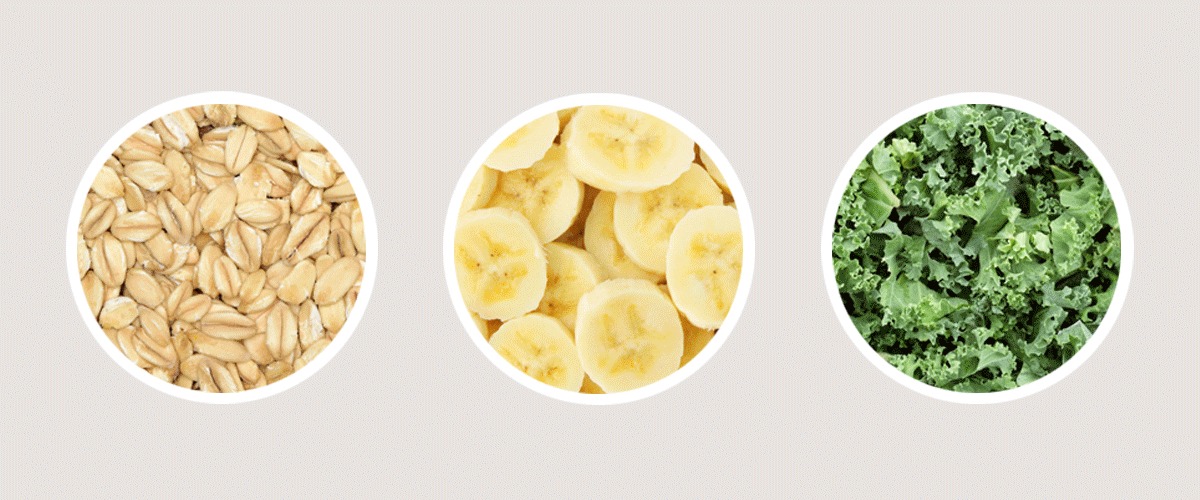How to Eat More Fiber — and 7 Reasons Why You Should
A gastroenterologist explains why fiber is so good for you, and the easiest ways to incorporate more into your diet.


Most people know that fiber is good for them. But understanding why fiber is so important – and just how much you need in your diet – may be more of a mystery.
“In addition to allowing you to go to the bathroom more easily and avoid constipation, fiber is great for weight management,” says Dr. Carolyn Newberry, a gastroenterologist and physician nutrition specialist at NewYork-Presbyterian/Weill Cornell Medical Center. It can also help balance bacteria in the gut, and even potentially lower the risk of colorectal cancer. The tricky part? It takes more than an apple a day to reap all these benefits.
Studies have shown that about 95% of Americans are not getting the fiber that is recommended by the U.S. Food and Drug Administration, says Dr. Newberry. While the FDA has recommended people aim for 28 grams of fiber a day (based on a 2,000-calorie diet), the ideal intake can vary based on a person’s individual health conditions. “You have to make sure you’re making good food choices that have the amount of fiber that your body needs,” says Dr. Newberry.
Health Matters spoke with Dr. Newberry, who is also an assistant professor of medicine at Weill Cornell Medicine, to learn the biggest reasons why consuming fiber is a critical part of a healthy diet. Plus, she shares her tips on how to eat more fiber. It’s actually easier (and tastier) to do than you might think.

Dr. Carolyn Newberry
1. It Keeps Your Digestive System Moving
“Fiber just helps the digestive track flow,” says Dr. Newberry. The more fiber one consumes, the lower the likelihood of constipation. “Fiber helps bulk stool so that it’s easier to pass and it improves transit time,” she says. The easier it is for stool to move through your colon, the faster your body will be able to expel it.
2. Fiber Can Help Lessen the Risk of Colon Cancer
You can think of stool, Dr. Newberry says, as toxic byproducts of things that you eat. “The less time stool comes into contact with the wall of the digestive tract and colon, the less a person may be at risk of developing things like inflammation, or cellular changes that could potentially lead to things like colon cancer down the road,” she says.
3. It Keeps You Fuller, Longer
The more fiber a snack or meal contains, the longer it will keep you feeling full. “Fiber helps you feel satisfied, so it can also help with appetite regulation and avoiding overeating,” says Dr. Newberry. “For people looking to improve portion control and maintain a healthy weight, fiber is a great tool.”
Maintaining a personalized healthy weight has far-reaching impact: “It’s associated with reducing the risk of things like heart disease and developing metabolic syndrome, which is associated with elevated blood pressure, cholesterol, and blood sugars.”
Soluble Versus Insoluble Fiber: Why You Need Both
There are two different types of fiber — soluble and insoluble — and both are very important in digestive health and the prevention of colon cancer, Dr. Newberry says.
Soluble
Function: These fibers are broken down in the body into short-chain fatty acids, which are important to the health of certain cells that line the digestive tract, Dr. Newberry says.
Example: “Soluble fibers dissolve in water. For example, plain oatmeal in a bucket of water is going to absorb that water and form the shape of whatever container it’s in,” Dr. Newberry says.
Insoluble
Function: They bulk the stool, and improve colonic transit time, reducing the time that toxic byproducts from foods and the metabolic processes of digestion are in contact with the colon wall, Dr. Newberry says.
Example: Think of roughage, like a raw leafy green or a piece of celery that you could throw into a water bucket and see it retain its shape.
4. Fiber Improves Overall Gut Health
Fiber is food for bacteria in the gut, Dr. Newberry says. “Probiotics are the bacteria that confer health benefits in our digestive tracts; prebiotics — the fibers — [are what] the probiotics eat. So the more fiber you get in your diet, the more you’re going to promote a healthy gut microbiome.”
The balance and health of the gut microbiome can impact the rest of your body, says Dr. Newberry. “It’s been implicated in things like cancer risk, cardiovascular health, and even mood.”
5. It Helps Regulate Blood Sugar
Fiber can also assist in regulating insulin levels, Dr. Newberry says. “Not only does it help with the gut microbiome and weight management, which can reduce your risk of developing diabetes and heart disease, but fiber also helps stabilize blood sugar levels.”
Dr. Newberry explains, “Excessive intake of simple sugars is going to raise insulin and blood sugar levels and increase your risk of diabetes. Whereas starchy and fibrous foods are actually going to keep insulin levels regular and keep blood sugar levels where they’re supposed to be.”
6. You Need More of It Than You’re Likely Getting
“In general, we recommend at least 25 to 35 grams of fiber per day for the average American,” Dr. Newberry says. “That range gives you some leeway. Somebody who’s eating fewer calories per day is going to have a slightly lower fiber need than someone who needs more calories. And that’s going to be dependent on (among other things) your body size, your sex, and your activity level.”
There are many apps you can download to figure out the fiber content of different foods. “They have a lot of foods chronicled and you can easily put in portion sizes. They’ll total the amount of fiber that you’re eating [based on] whatever you’re putting in,” says Dr. Newberry.



7. It’s Easier to Incorporate Fiber Into Your Diet Than You Might Think
There are some simple ways to add fiber to your daily diet. For example, consider some dishes you or your family cook frequently — pasta, for example — and think about making some smart ingredient swaps. “You can try switching from a white or wheat pasta to [a variety] that’s made of lentils or chickpeas, something that has much more fiber per ounce versus regular pasta,” says Dr. Newberry. “Or rather than doing a regular lasagna with noodles, you can do a lasagna using eggplant.”
Also think about topping a dish or mixing into it a ground-up high-fiber ingredient. “I tell people to add chia seeds or flax seeds to their morning cereal or smoothie, because that’s going to add a lot of extra fiber,” she says.
In general, you really can’t get too much fiber into your diet. “By definition, fiber is basically this indigestible compound. Your body breaks down a little bit of it, but most of it goes out in waste product,” says Dr. Newberry.
And if you’re wondering whether a supplemental pill might give you the same health benefits as a daily bowl of oatmeal sprinkled with chopped apples, the answer is no. “Fiber supplements certainly have their role,” says Dr. Newberry. “If somebody has constipation and we want to increase the amount of fiber they’re getting to help them go to the bathroom more regularly, a fiber supplement is a great option. But in terms of health benefits — like an improved gut flora, reduced risk of cancers, feeling full for longer — data is pretty weak [to support] that fiber supplements have the same benefits as fiber from food.”
How to Eat More Fiber Without Bloating
Super-fibrous foods can prompt gas, bloating, and discomfort in some people. But that doesn’t mean you can’t up your intake; it just means you have to be savvy about how you do it. These tips from Dr. Newberry can help.
- Talk to your doctor about preexisting conditions. “People who have slow digestive tracts, which may be part of a condition called gastroparesis, can try eating smaller quantities of fiber at a time,” says Dr. Newberry. “If you’re underweight and trying to gain weight, you may also want to avoid eating a big dose of fiber in one sitting, because it might prevent you from eating enough.”
- Start incorporating fiber gradually, suggests Dr. Newberry. “It’s probably better to do a slow ramp-up, particularly if you’re not a big fiber eater to begin with, so that your body gets used to tolerating the fiber.”
- Find the fiber that’s right for you. “If you’re somebody who’s sensitive to fiber and gets gassy and bloats when you eat it, you may want to stick to more soluble fibers,” Dr. Newberry suggests. A big, raw leafy green salad with raw veggies, for example, may cause more bloating to a sensitive system; a green smoothie or soup may be a more tolerable choice. “You can also sauté vegetables with a little olive oil to sort of break down some of the bonds and make them easier to digest,” says Dr. Newberry.
Carolyn Newberry, M.D., is a gastroenterologist and physician nutrition specialist at NewYork-Presbyterian/Weill Cornell Medical Center and an assistant professor of medicine at Weill Cornell Medicine. Dr. Newberry sees patients at the Innovative Center for Health and Nutrition in Gastroenterology, a multidisciplinary weight management and lifestyle program. Dr. Newberry’s primary clinical and research interests lie in defining the relationship between GI, nutrition, and obesity. She has published multiple review papers and original articles examining diet’s role in treating common gastrointestinal diseases, the link between malnutrition and gut pathology, and optimal therapy for obesity management.

